Encoding and Decoding analog and digital signals
High four Advantages of Utilizing Social Media Sites
September 10, 2021Know The Pros And Cons Of Using A Hair Straightening Brush
September 10, 2021For communication to take place each transmitting and receiving should occur successfully. Transmitting involves the sender encoding the message and transmitting it over the medium. Receiving involves the receiver understanding the organisation of the encoded message – based on the protocols agreed upon throughout handshaking with the transmitter. The receiver can then decode the message primarily based on the rules of the agreed protocols. In essence both encoding and decoding are organising data processes. Encoding organises the data right into a type suitable for transmission along the communication medium. Decoding modifications the organisation of the acquired data right into a form suitable for subsequent data processes. Previous to transmission data is encoded into a signal in line with the rules of the transmission protocols being used and suited to the transmission media along which the message will travel. When messages reach their vacation spot the receiver reverses this process by decoding the signal and remodeling it back into data. Data that originates or is stored on a pc is always in binary digital form. Digital data is all data that is represented (or may very well be represented) utilizing entire distinct numbers – within the case of computer systems a binary illustration is used. Steady data that often originates from the real world is analogy. Both analogy and digital data might be encoded and transmitted on electromagnetic waves. Note that in reality all waves are steady hence they are analogy. For our objective, it is how we select to interpret the data carried on these analogy waves that we shall use to distinguish between digital signals and analogy signals. A digital signal is getting used when digital data is encoded onto an analogy wave. An analogy signal is being used when analogy data is encoded onto an analogy wave. To encode analogy data right into a digital signal requires that the data first be transformed into digital using an analogy to digital converter (ADC). Equally to encode digital data into an analogy signal the data should be transformed to analogy data using a digital to analogy converter (DAC).
Analogy Data to Analogy Signal
When the data is analogy the waveform varies constantly in parallel with the modifications in the unique analogy data. For instance microphones accumulate analogy sound waves and encode them as an infinitely variable electromagnetic wave
The voltage transmitted from the microphone varies continuously in parallel with the soundwaves coming into the microphone. An analogy signal is produced as the whole analogy wave represents the original analogy data. All factors on the analogy wave have significance – this isn’t true of digital signals.
Analog signals are transmitted alongtraditional PSTN telephone lines. For voice(audio) microphones are used as thecollection machine and speakers because the displaydevices. The microphone encodes the analogdata and the speaker performs the decoding process. The electromagnet within thespeaker moves out and in in response to thereceived analog signal. This causes thespeaker’s diaphragm to move in and outwhich in turn creates compression wavesthrough the air that we finally hear as sound.Traditional analog radio and analog TV are additional examples of analog datatransmitted as an analog signal – including broadcasts through air and also analogaudio and video cassettes (VHS). In each cases an analog signal is transmitted thatvaries continuously. This analog signal is decoded and displayed by the receivingradio/stereo or television set.
Digital Data to Digital Signal
Digital signals are produced when digital data is encoded onto analog waves. Todecode the wave and retrieve the encoded digital data requires the receiver to read thewave on the similar exact time intervals. The receiver determines the characteristics of the wave at each time interval based mostly on the main points of the coding scheme. As aconsequence each particular waveform may be decoded back into its original bit pattern.There are commonly used strategies for encoding digital data. The first alters thevoltage present in a circuit to signify different bit patterns. This technique is usedover brief distances, together with communication within a pc and between nodeson a baseband LAN. Note that altering voltage changes the power or amplitude of thewave. The second alters characteristics of a relentless frequency electromagnetic wavecalled a service wave. The carrier wave is modified (modulated) to signify completely different bit patterns by altering a mix of amplitude, part and/or frequency. Themodulation (and subsequent demodulation) process is used for most lengthy distance broadband communication. Both the above encoding methods create differentwaveforms (often called symbols) that signify completely different numbers (bit patterns). Thewaveforms are modified at often spaced time intervals to symbolize each new pattern of bits.The time between every interval is known as the “bit time”. For instance on a100baseT Ethernet network the bit time is 10 nanoseconds. Due to this fact a transmittingnetwork interface card (NIC) on a 100baseT network ejects one bit each 10nanoseconds. Similarly all receiving nodes must look at the wave every 10nanoseconds. On 100baseT protocol networks a single bit is represented after each bit time utilizing Manchester encoding. Thereceiver detects the transitions to not onlydecode the signal but also to remain insynchronisation with the sender.Each transition from high to low or low to high occurs over time. Therefore the actualwave has rounded edges.
Should you loved this post and you would want to receive much more information about digital signal decoder software kindly visit our web site.

